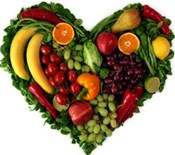High blood pressure is dangerous because it makes the heart work too hard and contributes to atherosclerosis (hardening of the arteries) says LSU AgCenter nutritionist Dr. Beth Reames.
Uncontrolled high blood pressure can lead to heart disease, stroke and kidney disease. These are the first, third and ninth leading causes of death in the United States. High blood pressure can result in other conditions, such as congestive heart failure and blindness.
Research has shown that following a healthy eating plan can reduce the risk of developing high blood pressure and lower an already-elevated blood pressure. A study, Dietary Approaches to Stop Hypertension (DASH), showed blood pressure could be lowered by following an eating pattern low in salt, saturated fat, total fat and cholesterol and rich in fruits, vegetables, whole grains and low-fat dairy products.
To get started using the DASH diet, the nutritionist makes these suggestions:
– If you now eat one or two vegetables a day, add a serving at lunch and another at dinner.
– If you don’t eat fruit now or have only juice at breakfast, add a serving to your meals or have it as a snack.
– Use only half the margarine, salad dressing or butter you do now.
– Gradually increase dairy products to three servings per day. For example, drink milk instead of soda, alcohol or sugar-sweetened tea with lunch or dinner. Choose low-fat (1 percent) or fat-free (skim) dairy products to reduce total fat intake.
– Try low-fat or fat-free condiments, such as fat-free salad dressings.
– Treat meat as one part of the whole meal, instead of the focus.
– Limit meat to 6 ounces a day (two servings). That’s all you need. Three to 4 ounces is about the size of a deck of cards.
– If you now eat large portions of meat, cut back gradually by a half or a third at each meal.
– Include two or more vegetarian-style (meatless) meals each week.
– Increase servings of vegetables, rice, pasta and dry beans in meals. Try casseroles, pasta and stir-fry dishes with less meat and more vegetables.
– Use fruits or low-fat foods as desserts and snacks. Fruits and low-fat foods offer great taste and variety. Use fruits canned in their own juice. Fresh fruits require little or no preparation. Dried fruits are easy to carry with you.
– Try these snack ideas: unsalted pretzels or nuts mixed with raisins, graham crackers, low-fat and fat-free yogurt and frozen yogurt, plain popcorn with no salt or butter added and raw vegetables.







